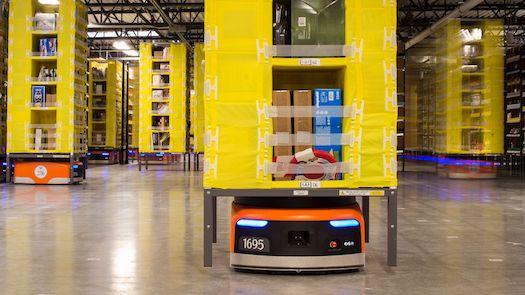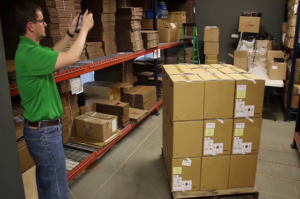Living in the Shadow of Amazon: Learn the Lessons

Amazon is the elephant in the room where any supply chain conversation is happening. Everyone is chasing that Amazon effect. Everyone is trying to figure out how to deliver on the expectations of customers that Amazon and its business models have created.
Retrofitting Amazon’s strategies or tactics for another business is tough. In terms of order volume and order profile, Amazon is its own kind of beast. At the same time, it makes sense to look at some of Amazon’s most groundbreaking tactics to see what lessons can be learned by electronics distributors. Trying to be Amazon won’t work, of course. However, there are ways to improve operations in ways that take into account your operating environment, merchandise profiles, and business realities.
1. Amazon Prime
Amazon Prime, the annual subscription offering from Amazon, is a master stroke. You could argue that they copied the Costco model with a yearly membership fee, but added a wealth of value in addition to two-day shipping.
The closest thing that a retailer or distributor can offer would be some kind of a subscription service. The secret would be identifying an essential item that customers would want delivered automatically at certain intervals. It would be important to consider products that are the right combination of being regularly used and where brand loyalty can be built with the customer.
2. Lightning fast fulfillment
In the past few years, the availability of warehouse execution systems (WES) set the bar for immediate order fulfilment. These systems fulfil an order in 20 minutes to an hour after an order has dropped into the distribution center. Amazon’s benchmark is 20 minutes. It’s fulfilment systems are so optimized that it can regularly meet that target. Further, Amazon’s Prime Now service delivers products to some areas in as little as two hours.
Originally, typical WMS used a “waving process,” which batched orders optimal allocation, picking and fulfilment. Today’s waveless order fulfilment down loads each order as it comes in to optimize processing. Further, today’s WMS optimize visibility into the warehouse. Technology adoption is the road that gives distributors and retailers a similar edge compared to Amazon.
3. Robots in Amazon DCs
Plenty has been said about Amazon’s use of robots in its distribution centers.
- In areas where real-estate is prohibitively expensive, items can be stored in tightly packed small bins and moved easily by robots.
- In organizations selling very small items, such as electronic components, items can be located in even smaller movable bins.
- With organizations that hire veterans (who are perhaps disabled), robots can move the bin to the worker, who stays in one place and fills customer-bound boxes.’
- Robotics offer flexibility that is far greater than fixed conveyors, allowing for quick reprogramming of functionality, travel paths and more.
Photo courtesy: Amazon
There are some downsides to the use of robots, though:
- Robots are expensive, so return on investment (ROI) takes time.
- Robots require charging infrastructure, and fast charging is still being developed, so charging time must be built into operations.
- Finding talented individuals who know how to program robotics can be difficult. This bar is being lowered every day as programming is made easier.
Carefully weigh both sides before deciding that robots are the right answer for the organization.
4. Standardization of DC design
If a distributor or retailer is considering a major supply chain infrastructure overhaul, standardizing the design of the distribution should top the list of priorities. Otherwise, it can be difficult to do. By having standardized processes, systems, layouts, and roles and responsibilities, creating multiple DC’s gets easier. Building and deploying new capabilities is also made simpler. The work and expense, though, rarely makes sense as a separate exercise after distribution centers already are up and running.
5. Geographical proximity
Amazon has more than 70 distribution centers that have been built recently. These boast modern infrastructure and technology. They are scattered across the United States. It makes sense to download orders to a distribution center located closest to a customer’s delivery zip code. The system needs to recognize the zip code and match it to the nearest DC that has the appropriate inventory on the shelf. Distributed Order Systems (DOM) are available from various WMS vendors, and can be can added on to an existing WMS or in a new deployment.
Which of Amazon’s strategies have inspired change in your business? What lessons can be learned from the retail giant? Let us know what you think in the comments section below.
Originally published at Smartgladiator.com on Feb 28, 2018.









